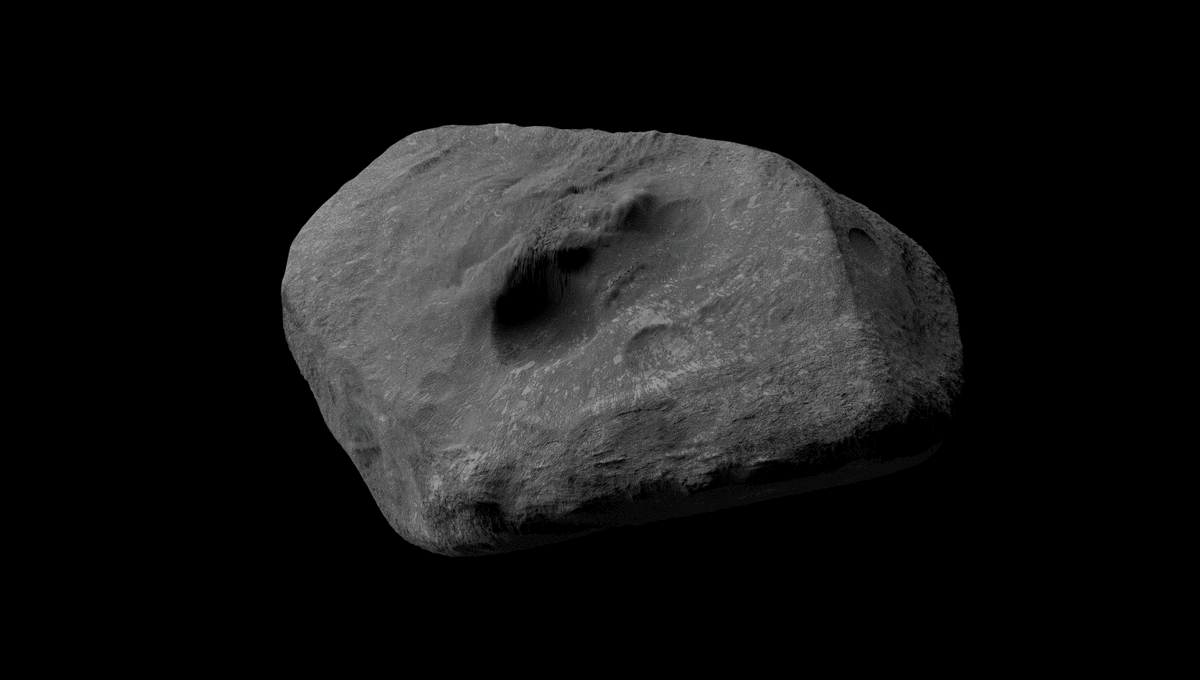
Asteroid 2024 YR4 is back in the spotlight. Brand new research has produced a better estimate of its size and orbit, which give it a 3.8 percent chance of hitting the Moon. Now a different group has looked at its orbital past, suggesting a likely place of origin: the middle of the main asteroid belt between Mars and Jupiter.
You might be thinking that the asteroid belt is a very reasonable place get an asteroid from. It is in the name after all. However, asteroids there are unlikely to suddenly start moving into Earth’s crossing orbits. Observations conducted by the W. M. Keck Observatory on Mauna Kea over several months have provided insights into its orbit, shape, and composition. These were enough clues to suggest a possible parent group of rocks, despite them not being the most obvious candidates in terms of orbital mechanics.
The asteroid is likely fully solid, and not a rubble pile like the large asteroids Bennu and Ryugu. It was probably a fragment of a much larger body, freed after a collision that began moving across the asteroid belt the wrong way round. And that’s what freed it from the gravitational stability of those orbits, and led it to become a near-Earth object.
“YR4 spins once every 20 minutes, rotates in a retrograde direction, has a flattened, irregular shape, and is the density of solid rock,” Bryce Bolin, research scientist with Eureka Scientific and lead author of the study, said in a statement. “The shape of the asteroid provides us with clues as to how it formed, and what its structural integrity is. Knowing these properties is crucial for determining how much effort or what kind of technique needs to be used to deflect the asteroid if it is deemed a threat.”
Despite a few months topping the hit list of the most dangerous asteroids, it is now certain that 2024 YR4 won’t hit our planet. There is an almost 4 percent chance that it will hit the Moon though so it is important to continue studying this rock.
“The odds of an impact into the Moon have always been there. It’s been lower at that time because the Earth [was] a bigger target,” planetary scientist Dr Andrew Rivkin, from Johns Hopkins University in Maryland, told IFLScience in an exclusive interview.
“The way that the orbit improved made the position move away from the Earth, but it moved toward the Moon. So there’s like almost a 4 percent chance it’s going to hit the Moon. That means there’s a better than 96 percent chance it’s going to miss the Moon, but if it did hit the Moon, it really would be pretty spectacular!”
The asteroid is estimated to be 53 and 67 meters (174-220 feet) based on observations from JWST, consistent with what the Keck observations suggest. If this rock were to hit the Moon it would create a crater 1 kilometer across (0.6 miles) and produce a flash of light for a few seconds, brighter than the Moon itself.
“Science-wise [the impact] would be great. It would be this natural experiment. People who study impact craters around the Solar System would get to see one in action,” Rivkin told IFLScience. “And you know people who study the Moon, if they were able to put seismometers in places on the Moon, they could learn about all sorts of things about the lunar interior. It would be this potentially amazing opportunity if nature cooperates.”
The study has been accepted for publication in The Astrophysical Journal Letters and is available on the ArXiv.
Source Link: Dangerous Asteroid That Might Hit The Moon Has A Very Unusual Origin